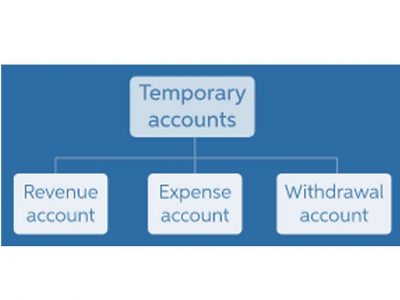
You use the full ACRS percentages during the remaining years of the recovery period. For the first tax year after the recovery period, the unrecovered basis will be deductible. 18-year real property is real property that is recovery property placed in service after March 15, 1984, and before May 9, 1985. It includes real property, such as buildings, other than that designated as 5-year, 10-year, 15-year real property, or low-income housing. Low-income housing that was assigned a 15-year recovery period under ACRS includes the following types of property.
Go to TaxpayerAdvocate.IRS.gov to help you understand what these rights mean to you and how they apply. TAS is an independent organization within the IRS that helps taxpayers and protects taxpayer rights. Their job is to ensure that every taxpayer is treated fairly and that you know and understand your rights under the Taxpayer Bill of Rights. Go to IRS.gov/WMAR to track the status of Form 1040-X amended returns. The IRS Video portal (IRSVideos.gov) contains video and audio presentations for individuals, small businesses, and tax professionals. The following IRS YouTube channels provide short, informative videos on various tax-related topics in English, Spanish, and ASL.
Tax depreciation 101
Also, you must depreciate the basis of each according to the depreciation rules that would apply to the underlying property if you had placed it in service at the same time you placed the addition or improvement in service. You determine the inclusion amount for property leased after June 18, 1984, and before 1987 by multiplying the fair market value of the property by both the average business/investment use percentage and the applicable percentage. depreciable property includes business, investment, and personal-use assets. You can find the applicable percentages for listed property that is 5- or 10-year recovery property in Table 19 or 20 in the Appendix. You must apply the predominant use test for an item of listed property each year of the recovery period. This chapter discusses some special rules and recordkeeping requirements for listed property. For complete coverage of the rules, including the rules concerning passenger automobiles, see Pub.
- Changes in depreciation that are not a change in method of accounting (and may only be made on an amended return) include the following.
- A partnership acquiring property from a terminating partnership must determine whether it is related to the terminating partnership immediately before the event causing the termination.
- Your election to use an alternate ACRS method, once made, can be changed only with the consent of the Commissioner.
- If you used listed property more than 50% in a qualified business use in the year you placed it in service, you must recapture (include in income) excess depreciation in the first year you use it 50% or less.
- If only a specific part of the entire tract of property is affected by the easement, only the basis of that part is reduced by the amount received.
Her combined rate of business/investment use for determining her depreciation deduction is 90%. Divide the balance by the number of years remaining in the useful life. This gives you the amount of your yearly depreciation deduction. Unless there is a big change in adjusted basis, or useful life, this amount will stay the same throughout the time you depreciate the property. If, in the first year, you use the property for less than a full year, you must prorate your depreciation deduction for the number of months in use.
Publication 544 – Additional Material
The applicable percentage for low-income housing is 100% minus 1% for each full month the property was held over 100 full months. If you have held low-income housing for at least 16 years and 8 months, the percentage is zero and no ordinary income will result from its disposition. This treatment applies only when figuring what part of gain is treated as ordinary income under the rules for section 1245 depreciation recapture. For any other disposition of section 1245 property, ordinary income is the lesser of (1), earlier, or the amount by which its fair market value is more than its adjusted basis. Your nonrecaptured section 1231 losses are your net section 1231 losses for the previous 5 years that have not been applied against a net section 1231 gain.

Depreciation is an annual income tax deduction that allows you to recover the cost or other basis of certain property over the time you use the property. It is an allowance for the wear and tear, deterioration, or obsolescence of the property. Depreciation is an annual tax deduction that allows small businesses to recover the cost or other basis of certain property over the time they use the property. It is an allowance for the wear and tear, deterioration or obsolescence of the property. The key factor here is that depreciation is limited to property that will lose its value over time. An asset isn’t depreciable if it can conceivably gain in value.
Understanding Section 1231 Gain
Your employer does not have to require explicitly that you use the property. However, a mere statement by the employer that the use of the property is a condition of your employment is not sufficient. If these requirements are not met, you cannot deduct depreciation (including the section 179 deduction) or rent expenses for your use of the property as an employee.

For example, a building (15-year real property) that was placed in service in 1981 and was converted to a theme-park structure in 1986 remains 15-year real property. 10-year property includes certain real property such as theme-park structures and certain public utility property. Manufactured homes (including mobile homes) and railroad tank cars are also 10-year property. All recovery property under ACRS is in one of the following classes. The class for your property was determined when you began to depreciate it.
What Does It Mean to Depreciate a Rental Property?
You made a down payment to purchase rental property and assumed the previous owner’s mortgage. The following table shows where you can get more detailed information when depreciating certain types of property. Many of the terms used in this publication are defined in the Glossary at the end of this publication. Glossary terms used in each discussion under the major headings are listed before the beginning of each discussion throughout the publication.
- Report your election to postpone reporting your gain, along with all necessary details, on a statement attached to your return for the tax year in which you realize the gain.
- Property becomes substantially vested when your rights in the property or the rights of any person to whom you transfer the property are not subject to a substantial risk of forfeiture.
- If you had sold the property at its fair market value, your ordinary income would have been $5,000.
- You do not elect a section 179 deduction and none of these items is qualified property for purposes of claiming a special depreciation allowance.
- Generally, you get no ACRS deduction for the tax year in which you dispose of or retire recovery property, except for 15-, 18-, and 19-year real property.

